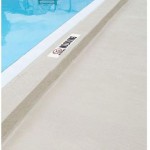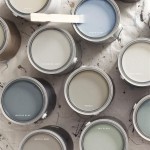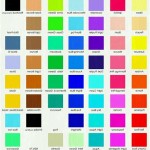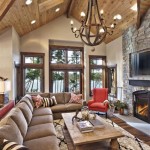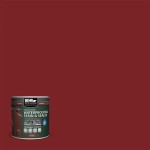What Color to Paint a Picket Fence: A Comprehensive Guide
The quintessential picket fence evokes feelings of Americana, homeownership, and a sense of idyllic charm. While the fence itself provides a boundary and visual aesthetic, the color choice significantly impacts its overall appearance and the way it integrates with the surrounding landscape and architecture. Selecting the right paint color for a picket fence requires careful consideration of several factors, including the style of the home, the landscaping, the desired mood, and the specific properties of the paint itself. This guide provides a comprehensive overview of the considerations involved in choosing the optimal color for a picket fence.
Understanding the Impact of Color
Color psychology plays a crucial role in the perception of any structure, and a picket fence is no exception. Different colors evoke different emotions and associations, influencing the overall feel of the property. A bright white fence, for example, traditionally conveys cleanliness, purity, and a sense of neatness. This classic choice is frequently associated with traditional homes and well-manicured lawns. Conversely, a darker color, such as charcoal gray or deep brown, can create a more modern or rustic aesthetic, blending seamlessly with natural surroundings or complementing contemporary architectural styles. The chosen color can therefore either enhance or detract from the intended aesthetic of the home and garden.
Beyond emotional impact, color also affects the perceived size and shape of the fence. Lighter colors tend to make objects appear larger and more prominent, while darker colors can visually recede into the background. If the goal is to define boundaries without overwhelming the visual landscape, a mid-tone or darker color might be preferable. Conversely, if the picket fence is intended to be a focal point, a brighter or more contrasting color could be selected.
Furthermore, the existing color palette of the house and surrounding landscape must be considered. Selecting a color that clashes with the house siding, roof, or garden features can create visual disharmony and detract from the overall curb appeal. A cohesive color scheme ensures that the fence complements the other elements of the property, creating a unified and aesthetically pleasing look.
Factors Influencing Color Choice
Several practical and aesthetic factors should influence the color selection process. These include the architectural style of the house, the surrounding landscaping, the desired level of maintenance, and the climate.
The architectural style of the home should be a primary consideration. Traditional architectural styles, such as Colonial, Victorian, or Craftsman, often lend themselves well to classic white fences. However, modern or contemporary homes might benefit from a more unconventional color choice, such as a muted gray, a deep teal, or even a black fence. The goal is to select a color that complements the architectural style and enhances the overall aesthetic of the property.
The surrounding landscaping also plays a significant role. If the yard features lush greenery and vibrant flowers, a neutral color fence can provide a subtle backdrop that allows the landscaping to take center stage. Conversely, if the landscaping is more minimalist, a bolder color fence can add visual interest and create a focal point. Consider the dominant colors in the garden and choose a fence color that complements them, creating a harmonious and balanced landscape. For example, a garden with predominantly cool-toned flowers might benefit from a fence painted in a cool-toned gray or blue, while a garden with warm-toned flowers might pair well with a fence in a warm-toned beige or brown.
The desired level of maintenance is another important factor to consider. Lighter colors tend to show dirt and grime more easily than darker colors, requiring more frequent cleaning and touch-ups. In areas with high levels of pollution or heavy rainfall, a darker color might be a more practical choice. Additionally, the type of paint used can also impact the maintenance requirements. High-quality paints are more resistant to fading, chipping, and mildew, reducing the need for frequent repainting. Matte or satin finishes tend to hide imperfections better than glossy finishes, reducing the appearance of minor scratches and blemishes.
Local climate conditions can also influence the best color choices. In areas with intense sunlight, darker colors can absorb more heat, potentially causing the fence to warp or fade more quickly. Lighter colors reflect sunlight, helping to keep the fence cooler and prolonging its lifespan. In areas with high humidity, mildew-resistant paints are essential to prevent unsightly growth. Selecting a paint that is specifically formulated for exterior use and resistant to the local climate conditions is crucial for ensuring the longevity and beauty of the fence.
Exploring Color Options and Their Implications
Several color options are available for picket fences, each with its own unique aesthetic and practical implications. These include white, off-white, gray, black, and natural wood tones, as well as less common options like blues, greens, and reds.
White remains the most popular choice for picket fences, symbolizing tradition, cleanliness, and a sense of timeless elegance. A bright white fence provides a crisp and clean look that complements a variety of architectural styles and landscaping designs. However, white fences require more frequent cleaning and maintenance to maintain their pristine appearance. Different shades of white also exist, ranging from bright white to creamy off-white, each offering a slightly different aesthetic. An off-white shade can provide a softer, more subtle look that blends seamlessly with natural surroundings.
Gray is a versatile and contemporary color option that can add a touch of sophistication to a picket fence. Gray fences come in a wide range of shades, from light, airy grays to deep, charcoal grays. Lighter grays can create a neutral backdrop for landscaping, while darker grays can add a dramatic and modern flair. Gray fences tend to show dirt and grime less easily than white fences, making them a more practical choice for areas with high levels of pollution or heavy rainfall.
Black picket fences are a bold and stylish choice that can make a statement. Black fences create a dramatic contrast with surrounding greenery and can add a touch of modern elegance to a property. However, black fences can absorb more heat in direct sunlight, potentially leading to warping or fading over time. It's crucial to choose a high-quality paint specifically formulated for exterior use and resistant to fading when selecting a black paint for a picket fence.
Natural wood tones can provide a rustic and organic look for a picket fence. Staining a picket fence with a wood stain allows the natural grain of the wood to show through, creating a warm and inviting aesthetic. Natural wood tones blend seamlessly with natural surroundings and can complement a variety of architectural styles. However, wood stains require regular maintenance to prevent the wood from weathering and fading over time. Regular application of a sealant or protective coating is essential to maintain the beauty and integrity of a wood-stained picket fence.
Less common color options, such as blues, greens, and reds, can add a touch of personality and individuality to a picket fence. These colors can be used to create a unique and eye-catching feature that reflects the homeowner's personal style. However, it's important to consider the surrounding landscape and architecture when selecting a less common color for a picket fence. Ensure that the chosen color complements the other elements of the property and doesn't clash with the overall aesthetic.
Ultimately, the best color for a picket fence depends on individual preferences, the style of the home, the surrounding landscape, and the desired level of maintenance. By carefully considering these factors and exploring the various color options available, a homeowner can select a color that enhances the beauty of their property and creates a welcoming and aesthetically pleasing environment.

Best Colour For Fences In Small Gardens

5 Fence Paint Colors To Refresh Your Exterior Curb Appeal Wow 1 Day Painting

The Orange Fence Is Gone Paint Wood Design Garden

What Is The Best Paint For A Wood Fence Pro Painters

Fence Paint 10 Best Color Ideas The Family Handyman

5 Fence Paint Colors To Refresh Your Exterior Curb Appeal Wow 1 Day Painting

Paint Colours For Fence Jims Fencing

Wood Fence Painting And Staining Instructions Tips
:strip_icc()/101872265-bd7f2fffa7514e5a989184b1d113de91.jpg?strip=all)
7 Gorgeous Picket Fence Ideas To Design The Garden Of Your Dreams

How To Paint A Fence Thistlewood Farm
Related Posts

